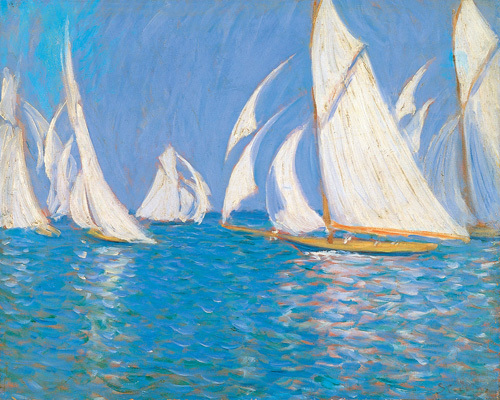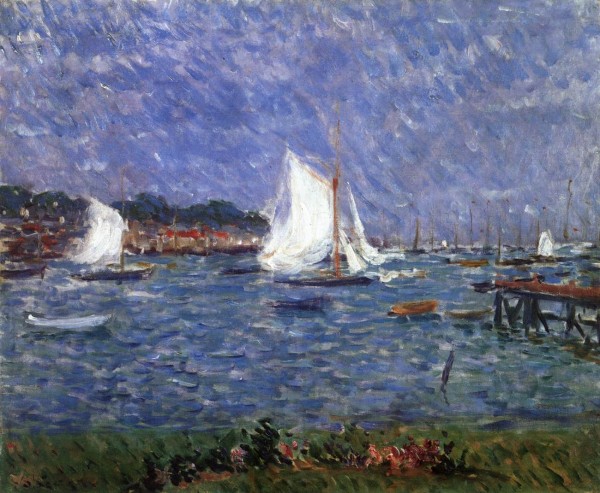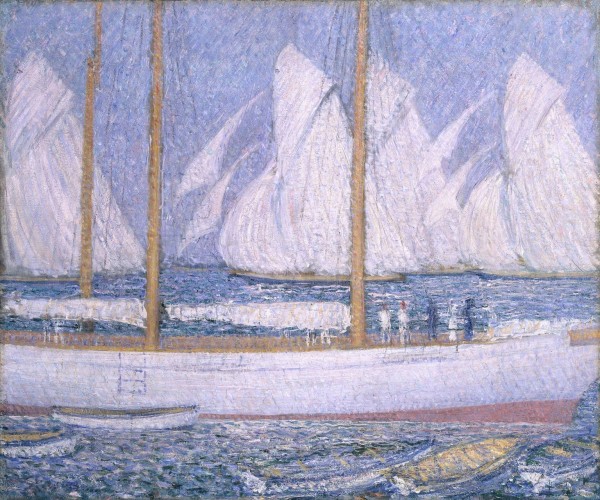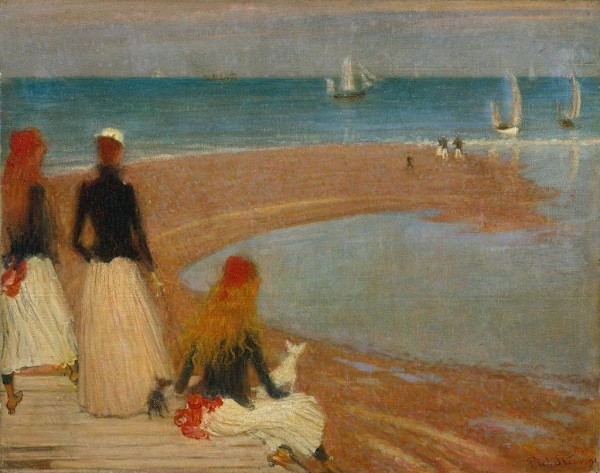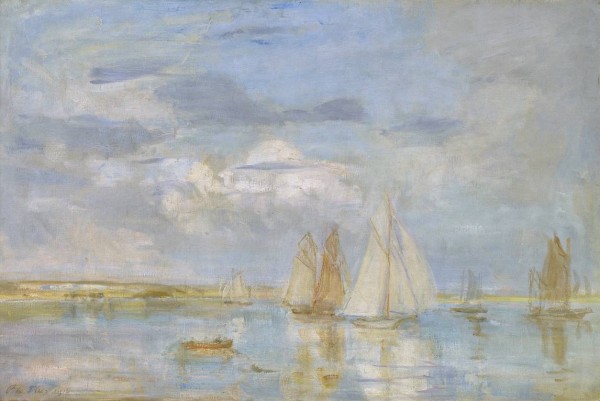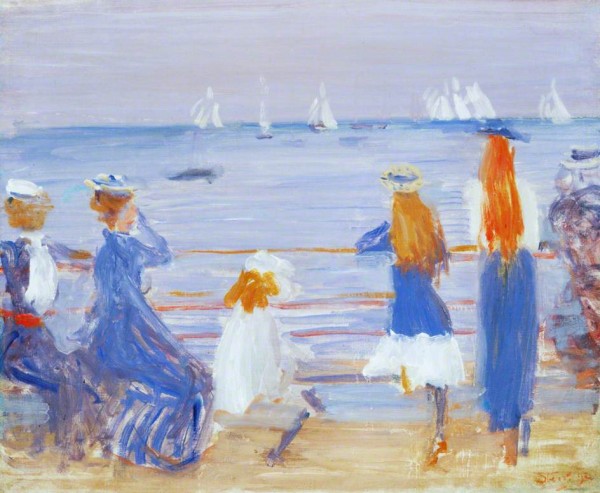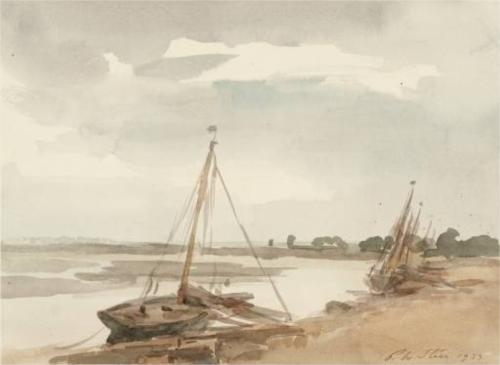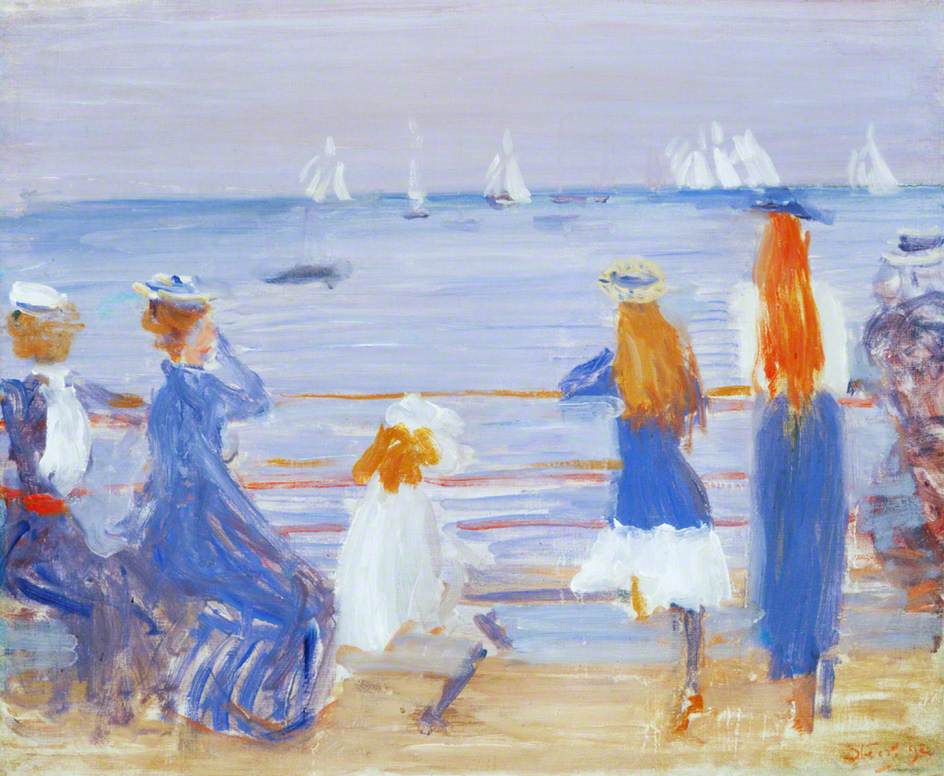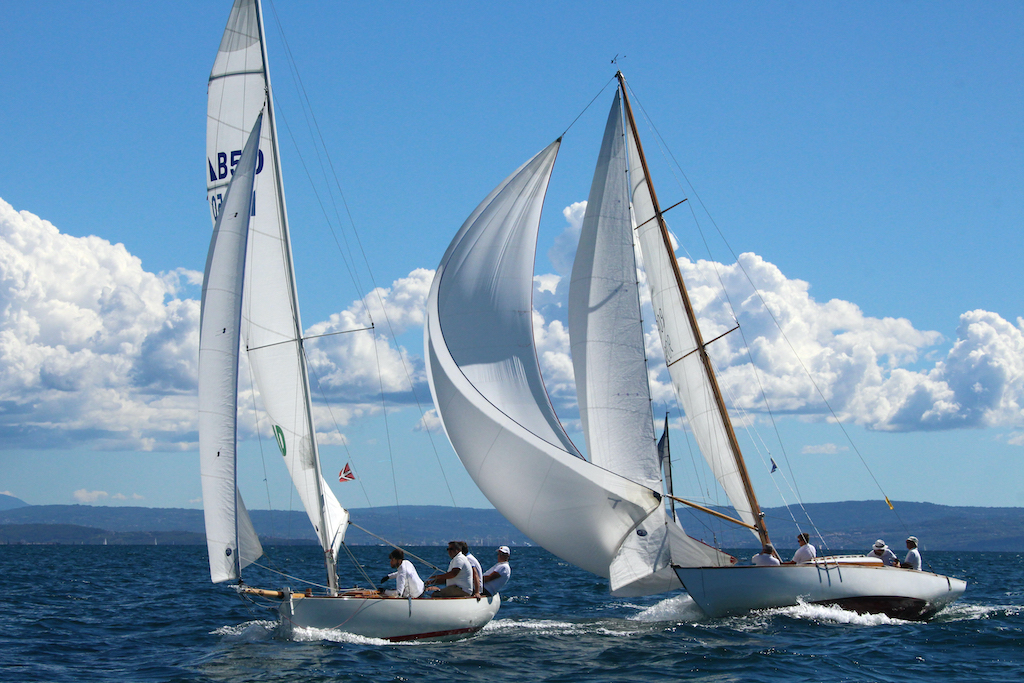English painter of landscape and occasional portraits and figure studies. He was a leading figure in the Impressionist movement in Britain.
The son of a painter, Philip Steer (d. 1871), Philip Wilson joined the Department of Coins and Medals at the British Museum in 1875 but found the demands of the Civil Service examination too rigorous and turned to painting in 1878.
Steer was one of the founders of the New English Art Club in 1886, a group of British artists who felt their work was neglected by the Royal Academy. Around 1892 Steer was producing the beach scenes and seascapes that are regarded not only as his finest works but also as the best Impressionist pictures painted by an Englishman, which, on the whole, seemed to have missed, almost completely, the Impressionist movement outside the few within the New English Art Club.
Throughout the 1920s Steer increasingly experimented with watercolour, a technique which provided him with a route out of the heavy impasto characteristic of his oils. These watercolours, impressionist in the strictest sense of the term, partly reflect the later works of Turner, but also signal a return to Monet and to a Whistlerian approach.
He continued painting landscapes and waterscapes until 1938 when his eyesight became too bad to go on.
Biography courtesy of ‘Web Gallery of Art‘.
Click on image to enlarge.

